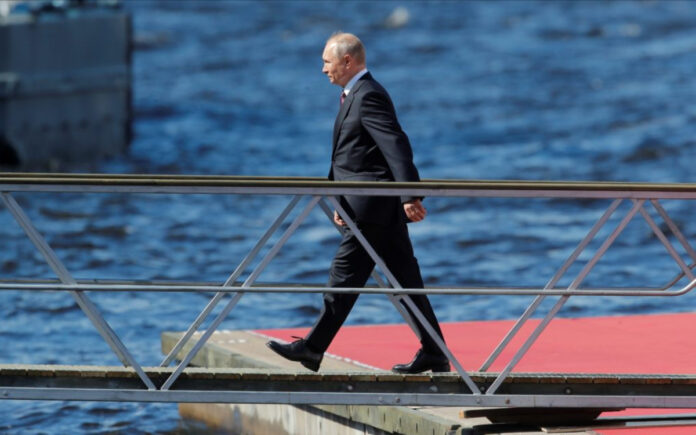London/New York: Russia has reportedly trained its navy to launch nuclear-capable missiles deep into Europe in the event of a conflict with NATO, according to a Financial Times report citing classified documents.
These secret files, presented to Russian naval officers before the full-scale invasion of Ukraine, included maps targeting areas as far west as France’s Atlantic coast and Barrow-in-Furness in the UK. This revelation underscores Moscow’s preparedness for a potential conflict extending beyond NATO’s borders, with plans for both conventional and nuclear strikes.
Previously, the Financial Times reported that Moscow had practiced using tactical nuclear weapons in the initial stages of a conflict with a major global power. These exercises, based on the same 29 classified military files, reveal a strategy of extensive strikes across Western Europe, hinting at the possibility of rapid escalation to nuclear warfare.
Nuclear-Capable Naval Forces
According to the files, Russia’s navy is equipped to deploy nuclear weapons from surface ships, posing significant risks of escalation. The navy’s high maneuverability allows for “sudden and pre-emptive blows” and “massive missile strikes from various directions”, with nuclear weapons intended to be used “in combination with other means of destruction” to achieve strategic objectives.
Analysts who reviewed the documents noted that these plans align with NATO’s assessment of Russia’s long-range missile capabilities and the likelihood of a swift transition to nuclear engagement.
Also Read | India’s Su-30 MK-I Successfully Launches Long-Range Gaurav Bomb
Russian Navy Targets NATO
The presentation maps highlight 32 NATO targets across Europe, including both military and critical infrastructure. William Alberque, a former NATO official, mentioned that these targets are only a fraction of “hundreds, if not thousands” mapped across the continent. The files suggest that, in the event of a conflict with NATO forces in frontline countries like the Baltic states and Poland, Russia’s capacity to strike targets throughout Europe would immediately come into play.
Jeffrey Lewis, a professor at the Middlebury Institute of International Studies, emphasized the seriousness of Russia’s approach, stating, “Their concept of war is total war. They see these things (tactical nuclear warheads) as potentially war-winning weapons. They’re going to want to use them, and they’re going to want to use them pretty quickly.”
Demonstration Strikes and Strategic Intent
The files also discuss the potential for a “demonstration strike”, where a nuclear weapon could be detonated in a remote area as a warning to Western nations. Although Russia has not publicly acknowledged such a strategy, the documents suggest that this would be intended to show “the availability and readiness for use of precision non-strategic nuclear weapons” and to signal Russia’s “intention to use nuclear weapons.”
Fabian Hoffmann, a nuclear policy expert at the University of Oslo, explained that this combination of nuclear and conventional strikes is meant to pressure adversaries into negotiations during escalating tensions.
NATO’s Vulnerabilities and Russian Doctrine
NATO estimates that its member countries have less than 5% of the air defense capacity needed to protect the alliance’s eastern flank from a full-scale Russian assault. Russian President Vladimir Putin has claimed that Europe would be “more or less defenseless” against Russian missile strikes, further emphasizing the perceived threat.
Dara Massicot of the Carnegie Endowment for International Peace noted that Russia’s reliance on nuclear weapons early in a conflict with NATO reflects its limited conventional resources. “They just don’t have enough missiles,” she stated.
Despite a 1991 agreement with the US to eliminate tactical nuclear weapons on surface ships, the leaked documents reveal that Russia has retained this capability. Among the listed assets are anti-submarine missiles and ship-based anti-aircraft guided missiles equipped with nuclear warheads.
Recent exercises, including the loading of nuclear warheads onto Soviet-era P-270 anti-ship missiles aboard a Tarantul-class corvette in Kaliningrad, indicate that these plans remain part of Russia’s current military doctrine. Footage from these drills shows Russian troops practicing nuclear warhead handling, signaling ongoing preparations for potential deployment.



